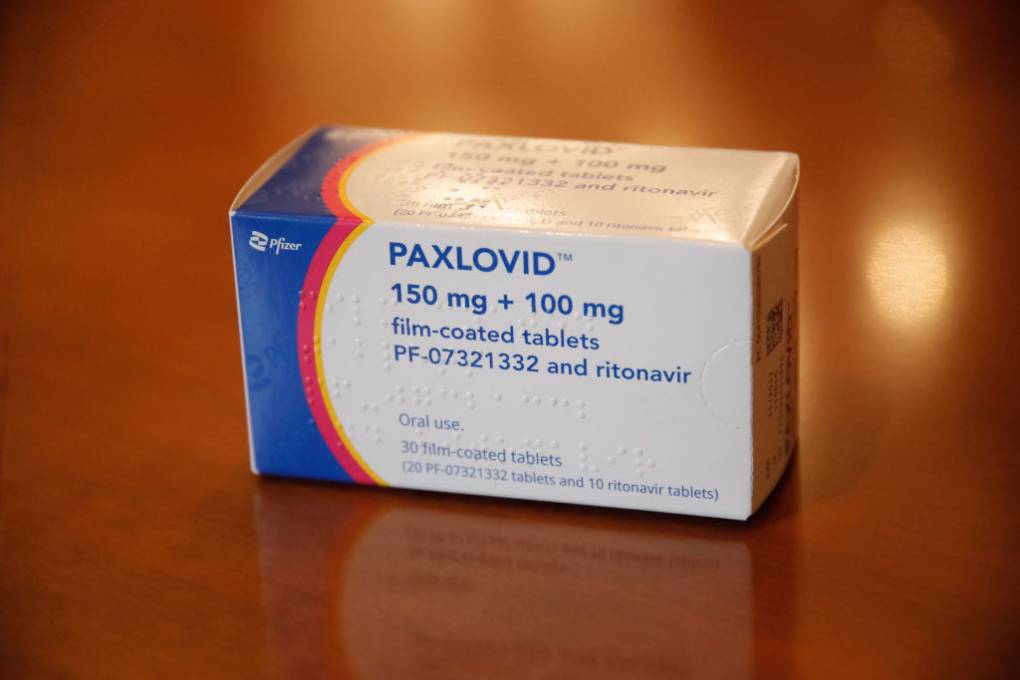As 2024 inches closer, COVID-19 is unfortunately still very much with us.
Ever since the drug Paxlovid was authorized by the Food and Drug Administration (FDA) back in December 2021, requesting this antiviral pill has been part of many people’s COVID plans for treatment and recovery for the last couple of years.
But now, starting this month, a few changes to how Paxlovid is funded are here — which could potentially have consequences for how you request and access the drug. And if you’ve asked for Paxlovid before or plan on seeking out the antiviral drug if you get COVID, there are some updates you might not necessarily expect.
Paxlovid has been proven to be highly effective at reducing severe disease and hospitalization from COVID, and there’s now also evidence it can help reduce the risks of long COVID, too. The drug has also been free by prescription in California for patients with mild to moderate illness “with risk of progression to severe disease,” according to the California Department of Public Health (CDPH). The agency notes that many common conditions might qualify you for this, including physical inactivity, obesity and depression.
Keep reading for everything you need to know about requesting Paxlovid in or after November so you’re prepared for any bumps along the way. If you’re met with unexpected Paxlovid charges, this information might help you understand why that’s happening — and how to avoid or challenge those new costs.
Jump straight to:
- If you have health insurance: How to avoid new potential costs for Paxlovid
- If you don’t have health insurance: How to find free Paxlovid
Paxlovid is transitioning to the commercial market
Like COVID vaccines (more on that below), Paxlovid supplies in the United States are moving away from being bought by the federal government and into the commercial market — like countless other drugs.
The government paid Pfizer, the makers of Paxlovid, around $530 per course of the drug. Now, Pfizer said the company has set the price of Paxlovid at around $1,400 per five-day course, and commercial ordering of the drug began on Nov. 1. Regardless of this change, health insurers still have to cover your Paxlovid (more on that below).
There’s also a Paxlovid alternative called Lagevrio (molnupiravir), which is undergoing the same transition to the commercial market this month. While the FDA’s data has shown that molnupiravir is a less effective drug than Paxlovid, doctors may still prescribe it instead for several reasons, including the risk of Paxlovid’s interactions with other medications you’re taking.
This move follows the trend of COVID care transitioning away from federal funding and into the traditional commercial health care market. This is also what’s happened with the new COVID vaccines now available in the U.S., which is why these kinds of vaccines were once offered at government-funded vaccination sites but are now being offered through providers and paid for by any health insurance you have.
In the earlier years of the pandemic, the federal government paying for COVID care was “a way to sort of just get a lot of people covered and then … figure out the financing after the fact,” said Anthony Wright, executive director of consumer advocate group Health Access California.
“But these resources are still available for folks, and people should take advantage of them, even though there’s no longer sort of a federal blanket policy,” Wright said. “It’s now more of a patchwork policy depending on your plan, depending on your location, etc.”
The takeaway: Paxlovid’s entry into the commercial market, with a much higher sticker price, means that any out-of-pocket costs could potentially be far greater. Hopefully, you won’t have to pay them.
There’ll still be a federal stockpile of Paxlovid (for a while)
Because the federal government did buy so much Paxlovid from Pfizer during the last couple of years, there’s still what a U.S. Department of Health and Human Services (HHS) official described as “an ample supply of federally-owned therapeutics with millions of treatment courses still in the field.”
The existence of this federal stockpile means that until Dec. 15, health care providers can still order Paxlovid from the government — rather than Pfizer — to distribute until supplies run out.
Federally purchased Paxlovid has been prescribed free so far during the pandemic, and the California Department of Public Health (CDPH) said that these supplies “will remain free to all patients regardless of insurance status.” This free federal supply is “expected to last through the end of the year in most areas, although this will vary depending on demand,” CDPH said.
Once that supply runs out, “the price of commercial product will depend on the individual’s insurance.” But because you won’t necessarily know if you are indeed getting Paxlovid free from the government and not purchased from Pfizer, if you have health insurance, it’s important to make sure you’re getting your prescription “in-network.” Jump straight to more information about getting Paxlovid through your health insurance.
The takeaway: If you are prescribed Paxlovid in the next few months, you could be getting a course that came straight from the government’s own supply rather than one purchased from Pfizer.

